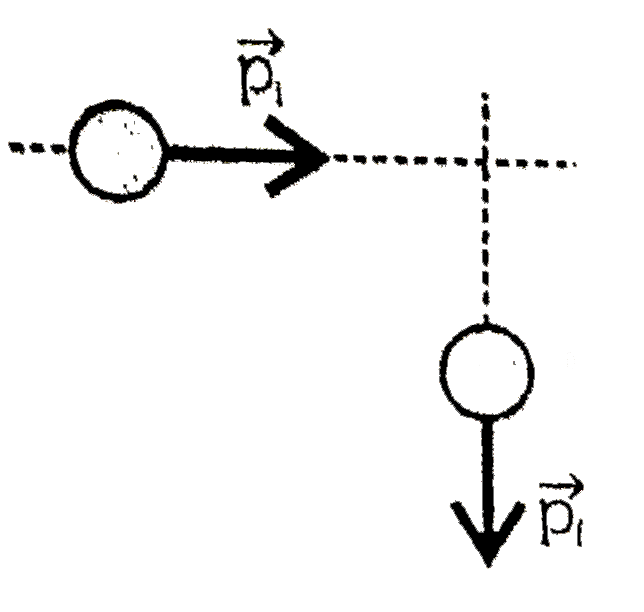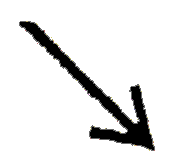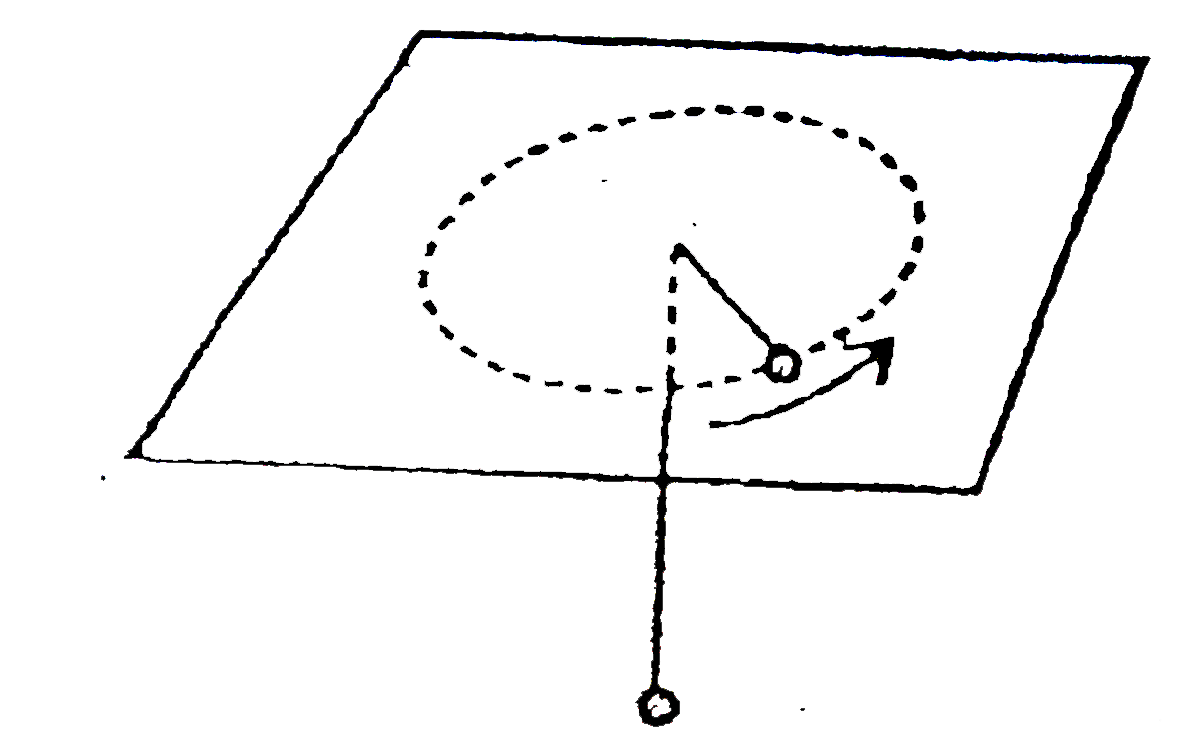A small puck is sliding to the right with momentum →P1 on a horizontal, frictionless surface, as shown in figure. A force is applied to the puck for a short time and its momentum afterward is →Pf. Which lettered arrow shows the direction of the impulse that was delovered to the puck ?
 Solution in Gujrati
Solution in Gujrati




The correct Answer is:B
Step by step video & image solution for A small puck is sliding to the right with momentum vec(P)_(1) on a horizontal, frictionless surface, as shown in figure. A force is applied to the puck for a short time and its momentum afterward is vec(P)_(f). Which lettered arrow shows the direction of the impulse that was delovered to the puck ? by Physics experts to help you in doubts & scoring excellent marks in Class 11 exams.
Updated on:21/07/2023Topper's Solved these Questions
- CENTRE OF MASSBOOK - ALLEN CHAPTER - CENTRE OF MASSEXERCISE - EXERCISE-II
43 Videos
- CENTRE OF MASSBOOK - ALLEN CHAPTER - CENTRE OF MASSEXERCISE - EXERCISE-III
41 Videos
- CENTRE OF MASSBOOK - ALLEN CHAPTER - CENTRE OF MASSEXERCISE - EXERCISE-V B
19 Videos
- BASIC MATHEMATICS USED IN PHYSICS &VECTORS BOOK - ALLEN CHAPTER - BASIC MATHEMATICS USED IN PHYSICS &VECTORS EXERCISE - EXERCISE-IV ASSERTION & REASON
11 Videos
- ELASTICITY, SURFACE TENSION AND FLUID MECHANICSBOOK - ALLEN CHAPTER - ELASTICITY, SURFACE TENSION AND FLUID MECHANICSEXERCISE - Exercise 5 B (Integer Type Questions)
3 Videos
Similar Questions
Two particle A and B start moving due to their mutual interaction only. If at any tiem 't', →aA and →aB are their respective accelerations, →vA and →vB are their respective velocities, and upto that time WA and WB are the work done on A and B respectively by the mutual force, mA and mB are their masses respectively, then which of the following is alwys correct.
View SolutionA particle of mass m, kinetic energy K and momentum p collision head on elastically with another particle of mass 2m at rest. After collision. :
Column IColumn II(A)Momentum of first particle(p)3/4p(B)Momentum of second particle(q)−K/9(C)Kinetic energy of first particle(r)−p/3(D)Kinetic energy of second particle(s)8K9None
View SolutionTwo particles of masses m1 and m2 in projectile motion have velocities →v1 and →v2 , respectively , at time t=0. They collide at time t0. Their velocities become →v'1 and →v'2 at time 2t0 while still moving in air. The value of ∣∣∣(m1→v'1+m2→v'2)−(m1→v1+m2→v2)∣∣∣
View SolutionAssertion: If the initial and final positions coincide, the displacement is a null vector.
Reason: A physical quantity can not be called a vector, if its magnitude is zero.
View SolutionTwo soap bubbles A and B are kept in a closed chamber where the air is maintained at pressure 8N/m2.The radii of bubbles A and B are 2cm and 4cm, respectively. Surface tension of the soap-water used to make bubbles is 0.04N/m. Find tha ratio nB/nA, where nA and nB are the number of moles of air in bubbles A and B, respectively. [Neglect the effect of gravity.]
View SolutionAn air puck of mass m_(1) is tied to a string allowed to revolved in a circle of radius R on a frictionless horizontal table . The other end of the string passes through a small hole in the centre of the table , and a load of mass m_(2) is tied to the string? The suspended load remains in equilibrium while the pack on the tabletop revolves. a. Find the tension in the string b. Find the radial force acting on the puck c. Find the speed of the puck d. Qualitaively describe what will happen in the monsion of the puck if the value of m_(2) is somewhat increased by placing an additional load on it. e.Qualitaively describe what will happen in the monsion of the puck if the value of m_(2) is instead decreased removing a part from the hanging load.
View SolutionA ball with initial momentum vec P collides with rigid wall elastically. If vec(P^(1)) be its momentum after collision then
View SolutionA puck of mass m is moving in a circle at constant speed on a frictionless table as shown in the figure . The puck is connected by a string to a suspended bob, also of mass m, which is at rest below the table. Half of the length of the string is above the tabletop and half below. What is the magnitude of the centripetal acceleration of the moving puck ? Let g be the acceleration due to gravity.

View SolutionTwo pucks are initially moving along a frictionless surface as shown in the diagram. The pucks have mass m1<m2 and begin with equal magnitude of momentum. A constant force →F is applied to each puck direactly to the right for the same amount of non−zero time. After the pushes are complete, what is the relationship for the size of the moments of pucks (p1 and p2) ?

View SolutionA small puck of mass m asn velcity v slider along a horizonal plane. The puck meets a "hill " of mass 3 m and height h that can also move along the plane . The puck begins to slide up the " hill" [see fig 4E.4 (a)] . If the hill is initially at rest m what value of v provides for the maxium subsequent velocity us of the " hill " ? Assume that all surface are frictionless.

View SolutionThe momentum of a body is vec P =2 cos t hati +2 sin t hatj. What is the angle between the force vec F acting on the body and the momentum vec P ?
View Solutionनिम्न में से किस एंजाइम में ताँबा पक सक्रियक के रूप में जुड़ा रहता है-
View SolutionA 0.25 kg puck is initially stationary on an ice surface with negligible friction. At time t = 0, a horizontal force begins to move the puck. The force is given by vecF=(12.0-3.00t^2)hati , with vecF in newtons and t in seconds, and it acts until its magnitude is zero. (a) What is the magnitude of the impulse on the puck from the force between t= 0.750 s and t = 1.25 s? (b) What is the change in momentum of the puck between t=0 and the instant at which F=0?
View SolutionIn Fig. puck 1 of mass m_1 = 0.25 kg is sent sliding across a frictionless lab bench, to undergo a one-dimensional elastic collision with stationary puck 2. Puck 2 then slides off the bench and lands a distance d from the base of the bench. Puck 1 rebounds from the collision and slides off the opposite edge of the bench, landing a distance 2d from the base of the bench. What is the mass of puck 2?
View SolutionDuring hockey practice, two pucks are sliding across the ice in the same direction. At one instant, a 0.18-kg puck is moving at 16 m/s while the other puck has a mass of 0.14 kg and a speed of 3.8 m/s. What is the velocity of the center of mass of the two pucks?
View SolutionHere are examples of how to use Newton's second law for a quck when one or two forces act on it. Parts (a), (b), and ( c ) of Fig. 5-3 show three situations in which one or two forces act on a puck that moves over frictionless ice along an x axis, in one-dimensional motion. The puck's mass is m = 0.20 kg. Forces →F1 and →F2 are directed along the axis and have magnitudes F1=4.0 N and F2=2.0 N. Force →F3 is directed at angle θ=30∘ and has magnitude F3=1.0 N. In each situation, what is the acceleration of the puck ?
View Solution
